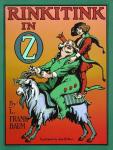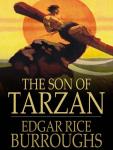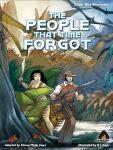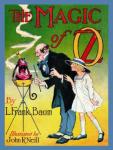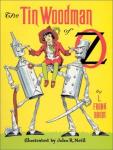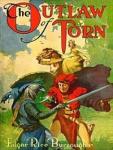Beyond The City
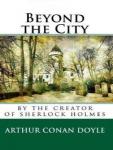
"How deeply are our destinies influenced by the most trifling causes Had the unknown builder who erected and owned these new villas contented himself by simply building each within its own grounds, it is probable that these three small groups of people would have remained hardly conscious of each others existence. But there was a common link to bind them together. And especially to the Admiral and the Doctor were this closer intimacy and companionship of value. Each had a void in his life, as every man must have who with unexhausted strength steps out of the great race, but each by his society might help to fill up that of his neighbor." An altogether different sort of tale from the man who gave the world Sherlock Holmes.
Contents
- Chapter 1 - The New-Comers
- Chapter 2 - Breaking The Ice
- Chapter 3 - Dwellers In The Wilderness
- Chapter 4 - A Sister'S Secret
- Chapter 5 - Chapter V. A Naval Conquest
- Chapter 6 - An Old Story
- Chapter 7 - Venit Tandem Felicitas
- Chapter 8 - Shadows Before
- Chapter 9 - A Family Plot
- Chapter 10 - Women Of The Future
Related Books
Author other works
-
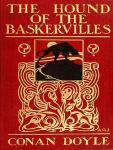
The Hound of the Baskervilles
Arthur Conan Doyle
The Hound of the Baskervilles is the third of four crime novels by Sir Arthur Conan Doyle featuring the detective Sherlock Holmes. Originally serialised in The Strand Magazine from August 1901 to April 1902, it is set largely on Dartmoor in Devon in England's West Country and tells the story of an attempted murder inspired by the legend of a fearsome, diabolical hound.In 2003 the book was listed on the BBC's The Big Read poll of the UK's "best-loved novel."The Hound of the Baskervilles is the classic detective chiller. The Baskerville family is haunted by a phantom beast which roams the mist-enshrouded wilds of Dartmoor. Now The Hound seems to be stalking the young Sir Henry, new heir to the Baskerville estate. Is this devilish spectre the manifestation of the family curse? Or is Sir Henry the victim of a vile and scheming murderer? Only Sherlock Holmes can solve the mystery.
-
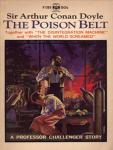
The Poison Belt
Arthur Conan Doyle
The Poison Belt was the second story, a novella, that Sir Arthur Conan Doyle wrote about Professor Challenger. Written in 1913, roughly a year before the outbreak of World War I, much of it takes place—rather oddly, given that it follows The Lost World, a story set in the jungle—in a room in Challenger's house. This would be the last story written about Challenger until the 1920s, by which time Doyle's spiritualist beliefs had begun to influence his writing.Challenger sends telegrams asking his three companions from The Lost World - Edward Malone, Lord John Roxton, and Professor Summerlee - to join him at his home outside of London. The cryptic telegrams also instruct each of them to bring a tank of oxygen. When they arrive they are ushered into a sealed room, along with Challenger and his wife. In the course of his research, Challenger has predicted that the Earth is about to come into contact with a belt of poisonous ether, which will, based on its effect on the people of Sumatra earlier in the day, cause the end of humanity. Challenger seals them in the room with the cylinders of oxygen, which he (correctly) believes will counter the effect of the ether. The sealing is not to keep the ether out - it permeates everything - but "to keep the oxygen in".The five of them wait out the Earth's passage through the band as they watch the world outside die, and machines run amok. (In an interesting display of Victorian values - or, at least, Doyle's take on them - Challenger does not even consider including his servants; they are left outside the room to die, and continue to perform their duties until the ether overtakes them.) Finally, the last of their oxygen cylinders runs dry, and they open a window, ready to face death. To their surprise, they do not die, and they wander through the dead countryside in Challenger's car, eventually making it to London. They encounter only one survivor, who is an elderly, bed-ridden woman prescribed oxygen for her health.After going to London and back, they make plans for the fate of the world at their hands—when suddenly, people start to wake up again. The effect of the ether turns out to be temporary, and the world wakes up again after a little over a day in a coma, with no knowledge that they have lost any time at all. Eventually Challenger and his companions manage to convince the world what happened - a task made easier by the tremendous amount of death and destruction caused by runaway machines and fires that took place while the world was asleep - and humanity is shocked into placing a higher value on life, and how well we spend what little time we are given.
-
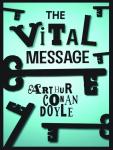
The Vital Message
Arthur Conan Doyle
The Vital Message was written by Arthur Conan Doyle. It was first Published in the United States by the H. Duran Company of New York in 1919.In "The New Revelation" the first dawn of the coming change has been described. In "The Vital Message" the sun has risen higher, and one sees more clearly and broadly what our new relations with the Unseen may be. As I look into the future of the human race I am reminded of how once, from amid the bleak chaos of rock and snow at the head of an Alpine pass, I looked down upon the far stretching view of Lombardy, shimmering in the sunshine and extending in one splendid panorama of blue lakes and green rolling hills until it melted into the golden haze which draped the far horizon. Such a promised land is at our very feet which, when we attain it, will make our present civilisation seem barren and uncouth. Already our vanguard is well over the pass. Nothing can now prevent us from reaching that wonderful land which stretches so clearly before those eyes which are opened to see it. That stimulating writer, V. C. Desertis, has remarked that the Second Coming, which has always been timed to follow Armageddon, may be fulfilled not by a descent of the spiritual to us, but by the ascent of our material plane to the spiritual, and the blending of the two phases of existence. It is, at least, a fascinating speculation. But without so complete an overthrow of the partition walls as this would imply we know enough already to assure ourselves of such a close approximation as will surely deeply modify all our views of science, of religion and of life. What form these changes may take and what the evidence is upon which they will be founded are briefly set forth in this volume." - Sir Arthur Conan Doyle
-
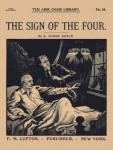
The Sign of Four
Arthur Conan Doyle
The Sign of the Four (1890), also called The Sign of Four, is the second novel featuring Sherlock Holmes written by Sir Arthur Conan Doyle. Doyle wrote four novels and 56 stories starring the fictional detective.The story is set in 1888. The Sign of the Four has a complex plot involving service in East India Company, India, the Indian Rebellion of 1857, a stolen treasure, and a secret pact among four convicts ("the Four" of the title) and two corrupt prison guards. It presents the detective's drug habit and humanizes him in a way that had not been done in A Study in Scarlet. It also introduces Doctor Watson's future wife, Mary Morstan.
-
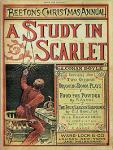
A Study In Scarlet
Arthur Conan Doyle
This is a detective mystery novel written by Sir Arthur Conan Doyle, introducing his new character of Sherlock Holmes, who later became one of the most famous literary detective characters. He wrote the story in 1886, and it was published the next year. The book's title derives from a speech given by Holmes to his sidekick Doctor Watson on the nature of his work, in which he describes the story's murder investigation as his "study in scarlet": "There’s the scarlet thread of murder running through the colourless skein of life, and our duty is to unravel it, and isolate it, and expose every inch of it."The story, and its main character, attracted little public interest when it first appeared. Only 11 complete copies of Beeton's Christmas Annual 1887 are known to exist now and they have considerable value. Although Conan Doyle wrote 56 short stories featuring Holmes, A Study in Scarlet is one of only four full-length novels in the original canon. The novel was followed by The Sign of Four, published in 1890. A Study in Scarlet was the first work of fiction to incorporate the magnifying glass as an investigative tool.
